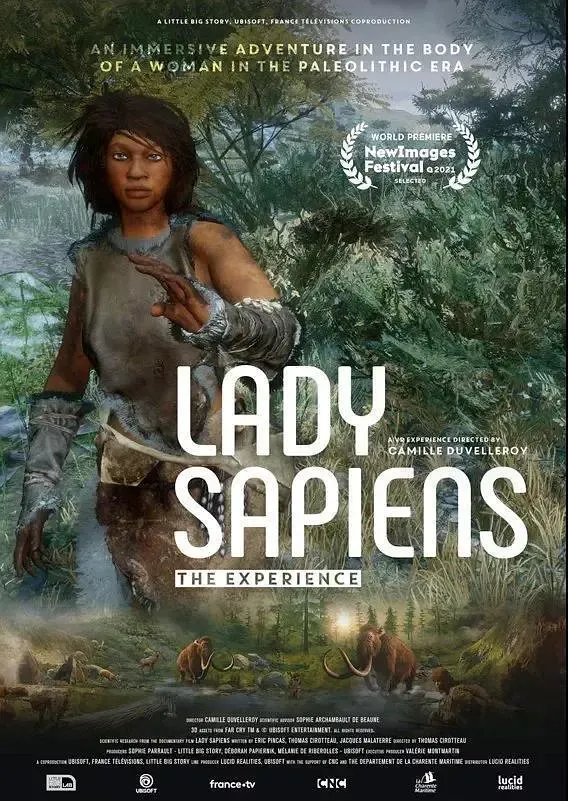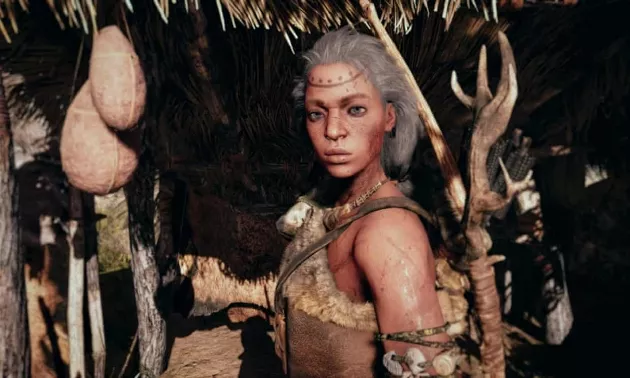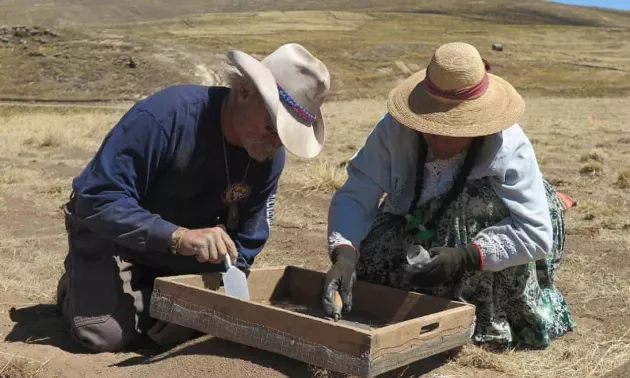On May 15, Beijing time, according to foreign media reports, it is well known that prehistoric men were responsible for hunting and obtaining food. What about prehistoric women? Are they very weak and only responsible for taking care of their children in the cave and avoiding the violent world outside In September this year, a French book and a documentary will be released in the UK to "expose" the simple division of prehistoric human gender roles

In September this year, the French book and documentary of the same name "female Homo sapiens: Prehistoric women" will be released in the UK. The documentary makers said that they found that the traditional concept of prehistoric gender division of labor was too simple by studying prehistoric human bones, cemeteries, art and ethnic history.
From the perspective of academic works, researchers previously believed that prehistoric men were responsible for hunting and collecting food, while women were auxiliary roles. They believed that when men strode towards mammoths and threw spears, women hid in caves as a tool of mother or male sexuality to avoid violence.
In September this year, the French book and documentary of the same name "female Homo sapiens: Prehistoric women" will be released in the UK. The documentary makers said that they found that the traditional concept of prehistoric gender division of labor was too simple by studying prehistoric human bones, cemeteries, art and ethnic history.

The producer of the documentary "female Homo sapiens: Prehistoric women" depicts the image of prehistoric women. The documentary shows that prehistoric women not only breastfeed young children, but also engaged in small-scale tribal hunting and other tasks.
Sophie de Beaune, a professor of prehistoric history at the third University of Lyon, France, said that for a long time, prehistoric history was written from the perspective of men. When referring to women, they were described as helpless and timid groups, protected by strong male hunters. Since prehistoric historians began to pay attention to prehistoric women, a picture of prehistoric human real life gradually emerged
Sophie points out that readers may be surprised to find that the roles of men and women in prehistoric times are not clear. In addition to childbirth, many division of labor is the cooperation of men and women. Their life is based on the close cooperation between all members of the group. Regardless of gender or age, this lifestyle ensures their survival. At the same time, the newly released books and documentaries emphasize that the "solidified cognition" of modern mankind to prehistoric women is caused by the lack of interest in prehistoric women's roles by 19th-century research pioneers.
Thomas cirotteau, one of the producers of the documentary "female Homo sapiens: Prehistoric women", pointed out that the purpose of this documentary is not to portray black skinned and blue eyed prehistoric women as "female Superman", but to broaden the possibility of their life roles. They will hunt like men and play an important role in the production of mass economy. At the same time, they will also make art, Prehistoric men and women respected each other and were full of tenderness.
Centered on the late Paleolithic period 10000-40000 years ago, the book of the same name focuses on the rock layout found at the prehistoric human site in gonnersdorf, Germany. It depicts a woman with a baby on her back, who can hunt and forage freely with her hands.
The documentary maker stressed that through bone research and analysis, we found that prehistoric women had strong upper arm muscles. In addition, prehistoric human groups, including women, were recently found hunting large-scale prey at the wilamaya patjxa site in Peru. Archaeologists found five cemeteries and excavated six prehistoric human bodies, two of which were placed with hunting tools. The two bodies were a man in his 30s and a woman under the age of 20, with 24 stone tools beside the young woman, It includes all the tools needed to hunt and slaughter large prey, including six projectors, four scrapers, a knife and several broken stones.
In addition, among the 10 early to late Pleistocene sites in the United States, 11 female tombs were found with burial weapons, indicating that the discovery of wilamaya patjxa site in Peru has broader significance.

Archaeologists found that prehistoric human groups including women hunted large prey at the wilamaya patjxa site in Peru. 24 stone tools were placed beside the young female dead, including all the tools needed to hunt and slaughter large prey, including six projectors, four scrapers, a knife and several broken stones.
Bourne pointed out that the importance of small-scale hunting has also been underestimated by researchers. In addition to hunting mammoths in groups, prehistoric humans also had the foraging behavior of fishing, collecting shellfish and killing small marine animals. Women were able to participate in such activities.
Motherhood is only a phased lifestyle of prehistoric women. Archaeologists' latest research on the diet and lifestyle of prehistoric women of childbearing age shows that they are not continuously pregnant and have children. Researchers' study of carbon, strontium and calcium in their bones showed that breastfeeding by mothers until the age of four significantly reduced fertility.
Vincent Balter, director of the French National Research Center, said that the maximum childbearing age of stone age women was about 30 years old. If they breastfed for 2-3 years and became pregnant and gave birth at the earliest age of 14, they would have at most 5-6 children in their life.
At the same time, in the latest books and documentaries, researchers speculate that prehistoric women have a high position in the group. A female skeleton with shell ornaments on her head was found at the cavelon female site of the Balzi Rossi cave group in Italy. The site provides important clues to the ancient times, indicating that the woman was respected by tribal members during her lifetime.
It is reported that in October 2021, the documentary was broadcast on French channel 5 television, and the audience reached 1.5 million. Some scientists raised disputes. Nine prehistorists said that the documentary systematically eliminated various factors of prehistoric male dominance and more or less ignored the dominant position of prehistoric men in the tribe.
The role of women in prehistoric conflicts is not shown by our prehistoric evidence, but by their role in prehistoric responses to various tribal activities.